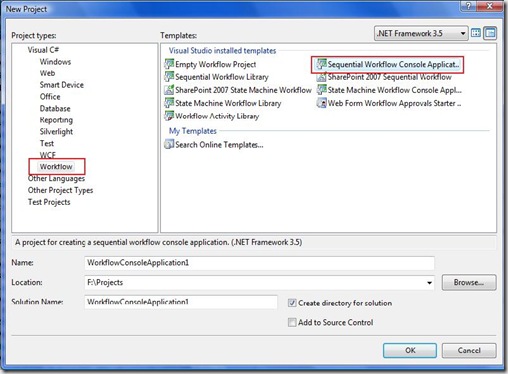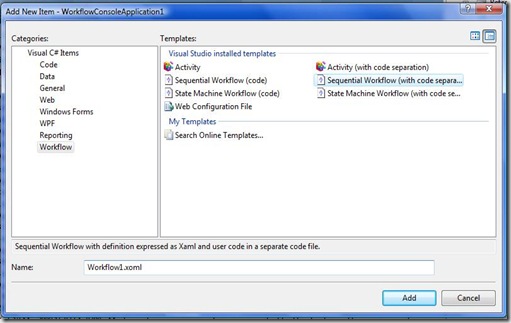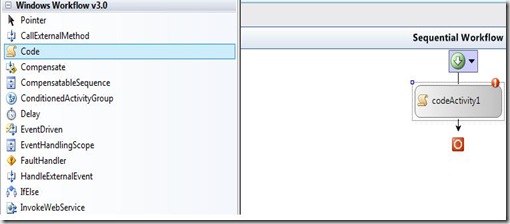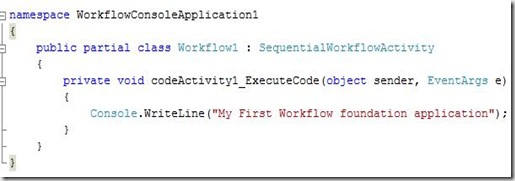Introduction
This post discusses the key concepts of workflow foundation, authoring the sequential workflow using the visual studio 2008 designer for WF and debugging the workflows using visual studio 2008 designer.
You can Get the overview on windows workflow foundation before going to read this post.
1. Create the new workflow project by selecting the File->New->Project in
VS 2008 it displays the following dialogue box
select the Sequential Workflow Console Application template and say ok.
2. We now have a workflow project with workflow1.cs file in the solution. You delete this file and right click on the project and say Add->New Item from the context menu.
select the Sequential Workflow (with code separation) template from the above dialogue box.
3. Drag and drop the Code activity to the design surface of the workflow.
Enter the value codeActivity1_CodeHandler for the ExecuteCode property.
4. Notice that codebeside class is a partial class and inheriting from the SequentialWorkflowActivity Base class.
5. Right click the codeactivity in workflow design and select the insert break point option from the context menu.
6. Compile and run the application by pressing F5 then it starts the workflow instance and that instance will break in the debugger when it gets in to the code activity.
Conclusion
This post discussed the basic workflow application and concepts and next post am going to explain using the if else activity in workflow designer.





Windows Workflow Foundation Key Concepts with example…
You’ve been kicked (a good thing) – Trackback from DotNetKicks.com…